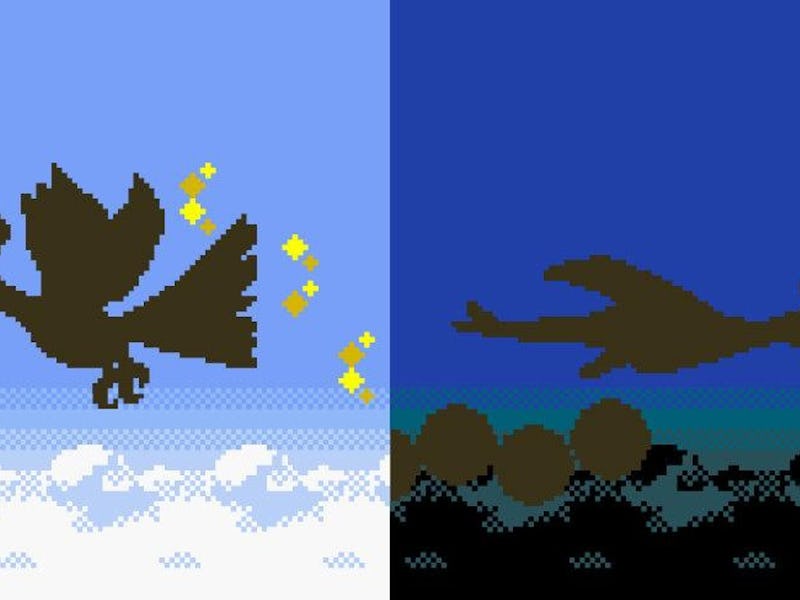23 years ago, Nintendo released the best video game sequel ever
Whole new world, with a brand new attitude.

In 1996, a little game called Pokémon Red and Blue was released, changing video games forever and inspiring dozens if not hundreds of other monster-catchers. While the first game remains influential, three years later Game Freak would return with a monumental sequel that upped the ante in every way, setting the stage for Pokémon games for decades to come. Pokémon Gold and Silver were initially released on November 21, 1999. All these years later, they remain shining examples of how subtle tweaks and enhancements to a formula that works can make a sequel so worth it. Pokémon Scarlet and Violet move the formula forward a great deal, but you could argue that Gold and Silver started it all.
The first pair of Pokémon sequels take players to the brand new Johto region filled with 100 new and wildly different, monsters to catch. There’s not one Pokémon in Gold and Silver that feels like a formulaic replication of the first games, and here we get some of the most out-there designs you can find in the series. You have Smeargle that uses its tail as a paintbrush, the utterly ridiculous Hitmontop, the adorably dumb Wooper, and of course, the mysterious Unown.
Facing down Red as the ultimate challenge of Gold and Silver made both games feel meaningfully connected.
Each Pokémon game ties to a real-world regional theme, and Johto matches a more traditional Japanese setting. However, what really makes Johto feel so vibrant is how it feels like an extension of Kanto from the first game with a number of meaningful connections. Beating the Elite Four and realizing you can then explore the entire Kanto region is a mindblowing moment, only heightened when you beat all the gym leaders and then face down Red, the very protagonist from the first game.
Outside of a phenomenal post-game, Gold and Silver also introduced a handful of mechanics that have since become major staples in the franchise. This was the first game to add Pokémon eggs and breeding, which brought a whole new element to capturing and filling out your Pokedex. Berries and held items were also a first here, integrally changing the combat system and giving you more strategic options for your team. Steel and Dark types also debuted, which provided more variation to the overall experience. Of course, perhaps the most notable addition was Shinies, a feature that players have obsessed over ever since, trying to catch the rarest color variations they can find
The number of gameplay innovations and changes in Gold and Silver are truly staggering, and it’s amazing that Game Freak decided to be so ambitious rather than just play it safe with a by-the-numbers sequel.
A day-night cycle and internal clock helped make the Johto region feel more vibrant and realistic.
While Gold and Silver have had a tremendous lasting impact from a gameplay perspective, the game’s story and themes are equally interesting, particularly in how they provide context for the world. The Legendary cover Pokémon Ho-Oh and Lugia were given central roles in the story, and both games do a great job of building a sense of mystery about the creatures. By the time you encounter the Legendaries, it feels like you’re meeting the gods of the Pokémon world, and that’s not to mention the Legendary dogs that you can run into randomly while exploring.
Gold and Silver are also the best at making their Team, in this case, Team Rocket, actually feel villainous. In Gold and Silver, you encounter the remnants of Team Rocket, trying to rebuild the team you defeated in the previous game. Your first encounter with the team has you stumbling upon an illegal Slowpoke operation, where they kidnap the Pokémon and sell their tails on the black market. That’s an incredibly dark twist that you simply wouldn’t find in modern Pokémon games. Later on, you find another plot where the team is using high-frequency soundwaves to force Magikarp to evolve, and then even later they forcefully hijack a radio station.
Team Rocket really feel like villains here, and their actions genuinely have dire ramifications for the people and Pokémon of the area. The same can be said of your rival, nicknamed Silver, who gets his Pokémon by literally breaking into Professor Elm’s laboratory and stealing it. Silver is an absolute jerk of a person who’s completely power-obsessed, hateful, and even physically abusive at times.
Team Rocket in Gold and Silver is the most villainous a team has ever felt, pulling off truly cruel feats that hurt both people and Pokemon.
He’s drastically different from any rival the series has ever seen, but it’s part of what makes him so valuable as a foil to the player, someone who’s literally the antithesis of the protagonist that gives you a real reason to overcome them. Pokémon Gold and Silver’s story feels more mature than the rest of the mainline series, and it’s interesting to see how, narratively, it didn’t feel the need to pull punches. In a way, it feels like the series has lost something since then. While the mechanics and gameplay advanced the franchise’s stories became simpler, never aiming to reach those complex narrative themes that Gold and Silver strove for.
It’s hard to overstate how different Pokémon might be today without Gold and Silver, as so much of the last two decades have been defined by what those two games introduced. It’s not easy to make a sequel that meaningfully forwards every piece of design from its predecessor, but Game Freak somehow stumbled upon the magic to do just that. There’s a good reason Gold and Silver are so beloved by fans, and it’s hard to think Pokémon will ever see another game that proves to be so imaginative and innovative all at once.